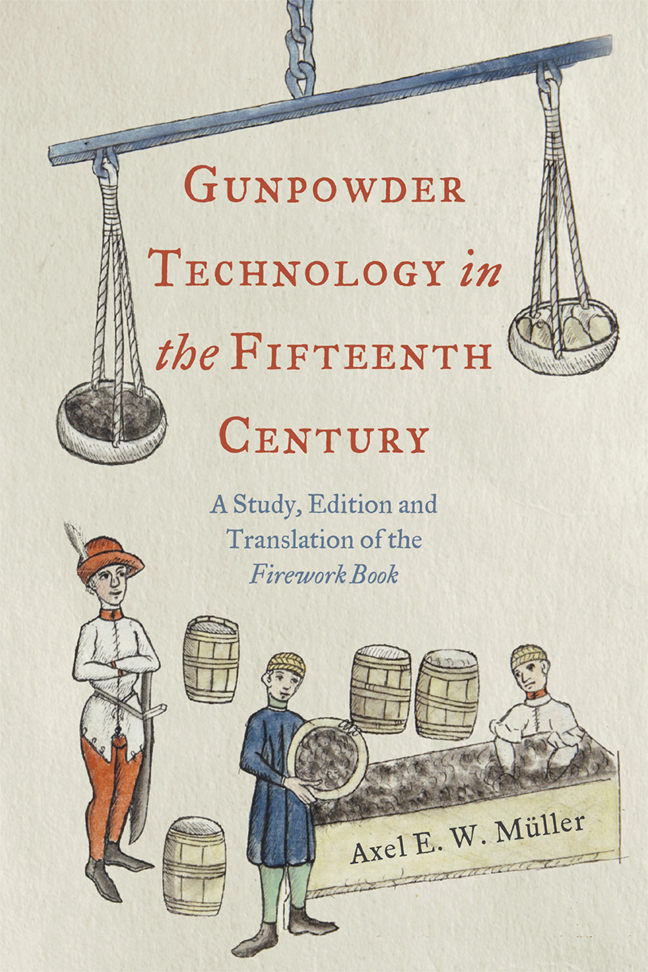 Gunpowder Technology in the Fifteenth Century
Gunpowder Technology in the Fifteenth Century 5 - Analysis of the Text
Published online by Cambridge University Press: 21 February 2024
Summary
Rainer Leng describes the Firework Book as a ‘recipe collection of chemical knowledge’. He mentions this in order to distinguish it from related manuals, such as the Büchsenmeister Books, all of which developed their own momentum in relation to distribution, use, and functionality. Berg and Friedrich are more specific, describing it as an ‘instruction for making saltpetre, gunpowder, and various incendiary devices’. They also single out the Firework Book as the first extant publication which collates practical knowledge related to a technical profession written in German, or any other vernacular European language – even if it was not the earliest it would have been among very few others. This chapter shows that it is far more than a ‘collection of chemical knowledge’. Following on from the edition and translation just provided, it gives a detailed analysis of the content of the Firework Book. Analysis will begin with the structure of the Firework Book and its key sections, discussing in particular the Master Gunner's Questions, the master gunner's core attributes, key terminology, and then in more detail the bulk of the Firework Book's recipes.
The majority of the Firework Book text consists of a wide range of recipes and notes, with seemingly little discernible structure and some repetition. This range implies that the book was not meant to be read from cover to cover, but instead to be used in its individual sections, and that it was helpful to have more information provided, even if it was repeating an earlier section. It is less clear, however, why their order changes from copy to copy.
Gerhard Kramer (1996 and 2001) is very specific in his analysis of the Firework Book composition, distinguishing between what he calls earlier and later sections, which he refers to ‘strata’. In total, Kramer subdivides the Firework Book into three stages of writing:
1 Produced around 1380: The Master Gunner's Questions and the core components on the ingredients and the powder (in I.34 this equates to fols 2r–20r, and fols 20v–25v, fols 29r–32v, and fol. 34r).
2 Produced around 1400: The ‘Preamble’, the ‘invention’ of gunpowder, and the gunner attributes, and the epilogue (in I.34 this equates to fols 1r–2r, fols 20r–20v, fols 25v–29r and fols 32v–34r).
- Type
- Chapter
- Information
- Gunpowder Technology in the Fifteenth CenturyA Study, Edition and Translation of the <i>Firework Book</i>, pp. 304 - 344Publisher: Boydell & BrewerPrint publication year: 2024
